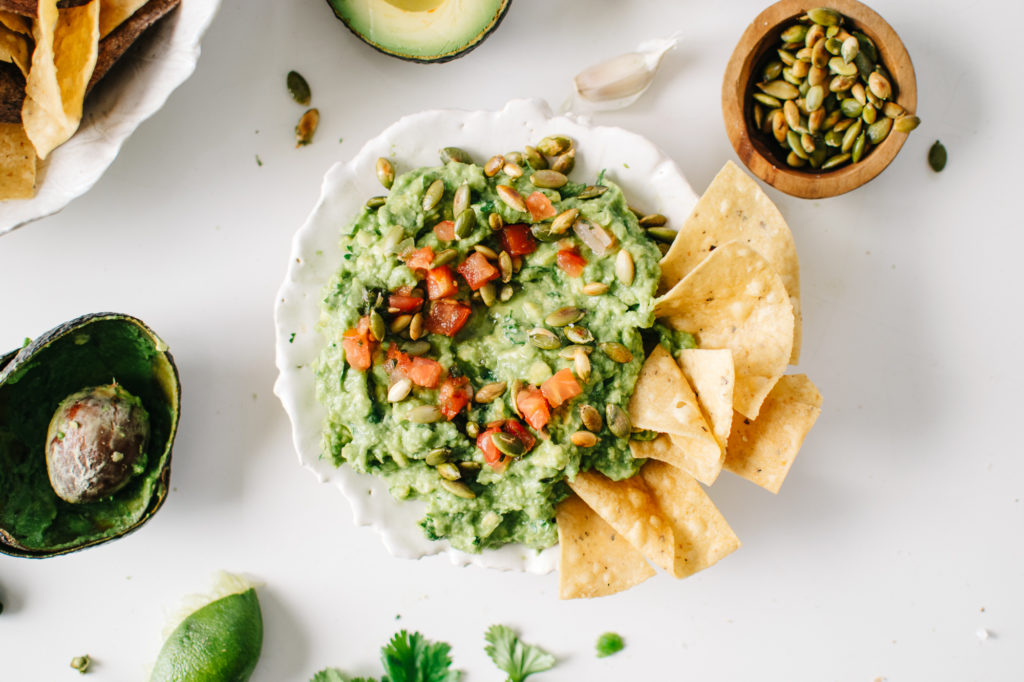
Before you are even really awake, before alertness has settled down into your mind, walk outside. Walk barefoot. Walk out onto the deck, down the stairs, down onto the grass. Walk over the rocks and the leaves, toes gripping and teasing and finding their way against bugs and dirt and twigs. You are looking for avocados. You are collecting the fruit of last night’s drop. If there was a wind, there will be exponentially more, but even without a wind, you will tuck at least five sun-warmed orbs of avocado into your night shirt, their heat beginning to awaken you from slumber.


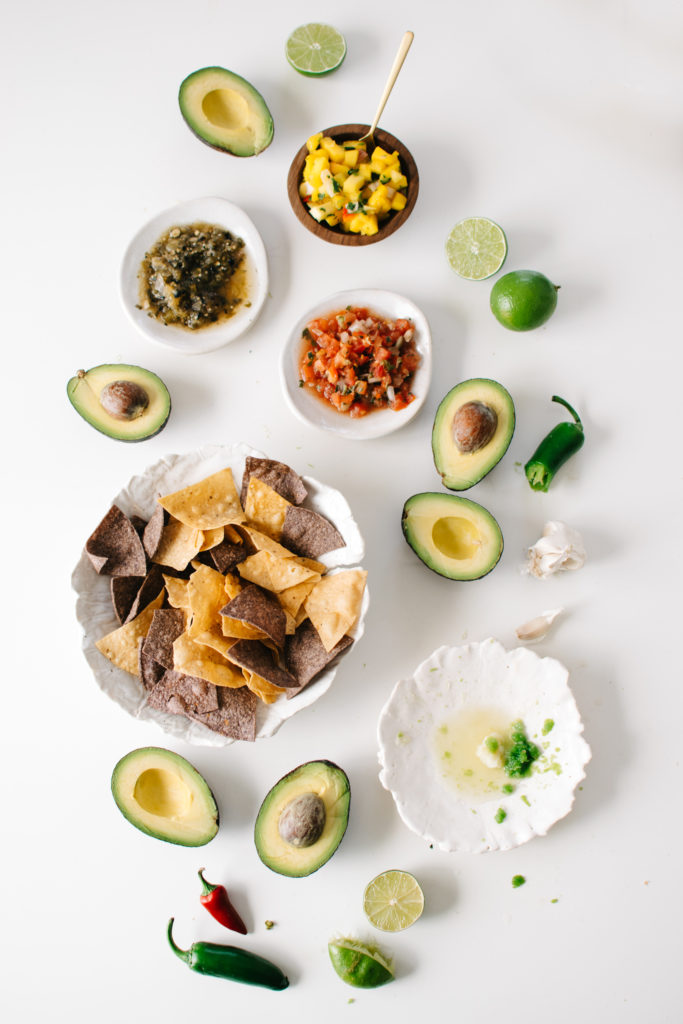
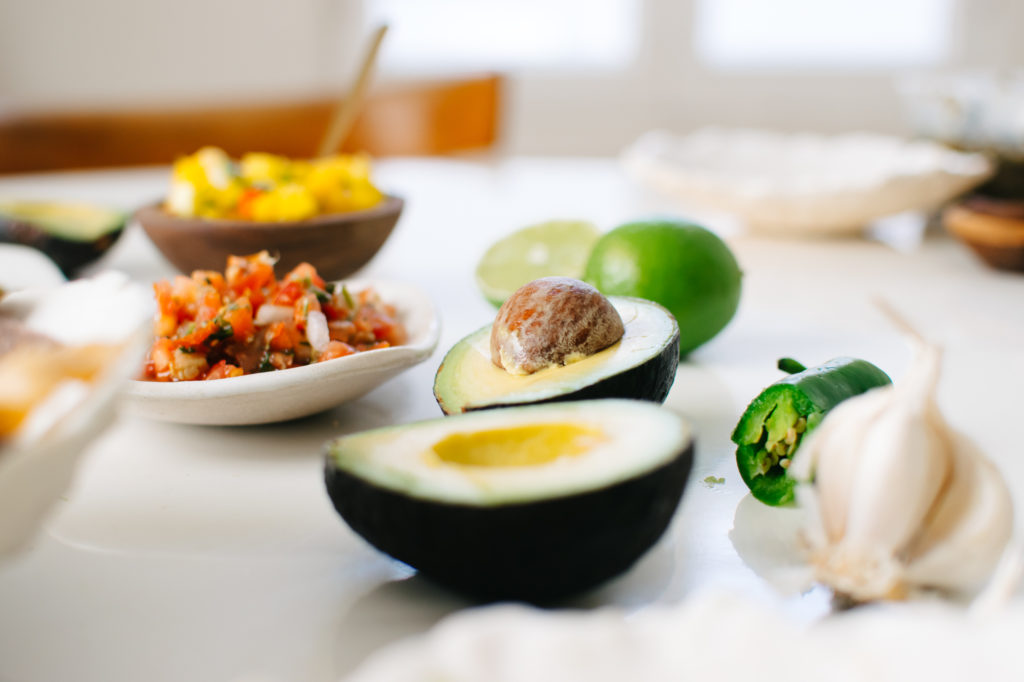
This is the way to wake up. This is the way I woke up on Maui, our home surrounded by sixty foot avocado trees that bore fruit so big it was aptly dubbed a football avocado. But we had other varietals, too, none of them properly known or classified, all of them distinct. Smooth skin, thin skin, pebbly skin, thick skin, greenish-black skin, kelly green skin. Huge pit, tiny pit, medium pit. Watery, creamy, buttery, salty, sweet, flavorless. Firmness like a golf ball, give like a tennis ball, softness like a ripe lemon. Pale yellow, lightest green, bright emerald. Tiny like eggs, round like wiffle balls, giant like footballs.
I was always afraid one of our football avos would land on me as I ventured out to pick salad greens, or take out the compost. I’d hope for the best, accustomed as I was to hearing the syncopation of avocados hitting the earth, loud cracks of unripe fruit hitting leaves or rocks. Many of them weighed in at nearly three pounds, with flesh creamier than a Hass. They were coveted, and they were legendary. My parents would bring a bag in the car with them wherever they went, dispensing them to friends around the island.
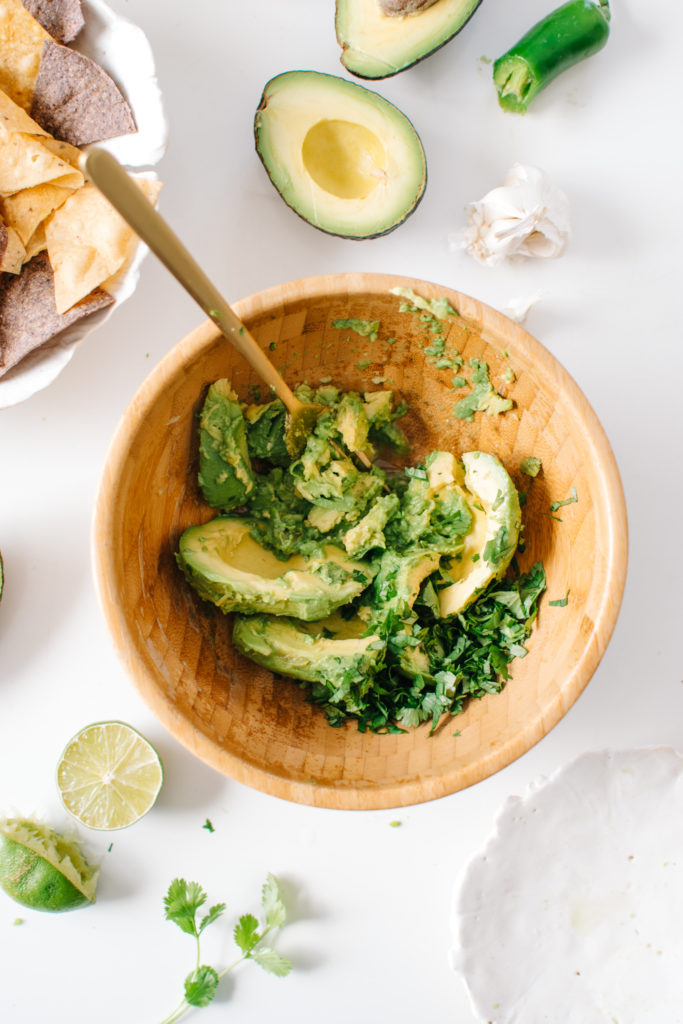
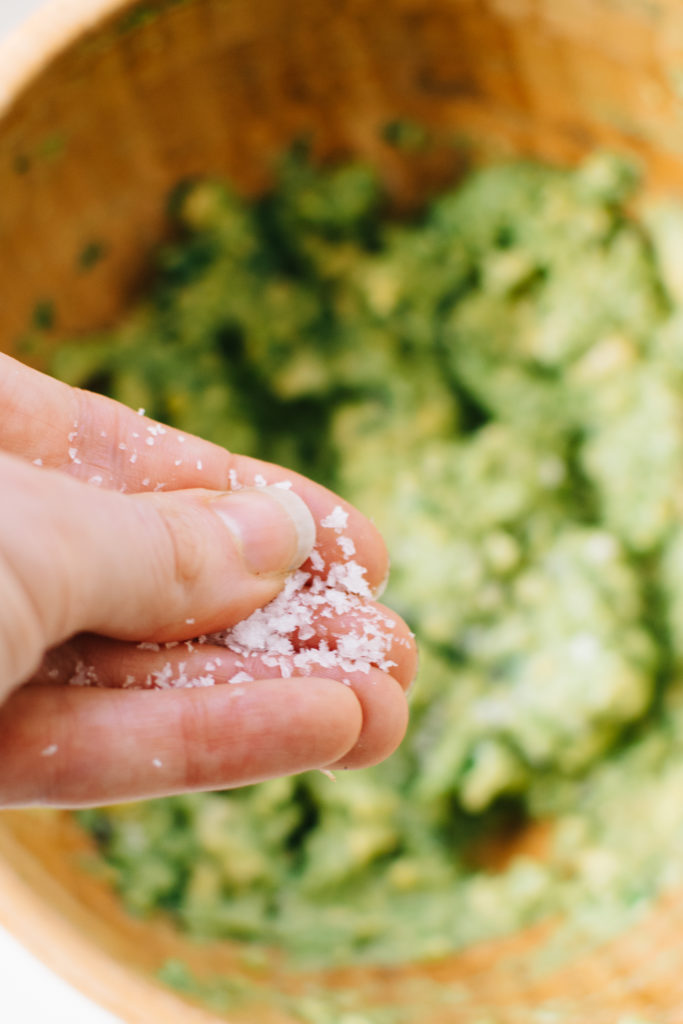

You can imagine my dismay upon moving to Connecticut at age 18 and discovering that my only avocado option was to purchase a tiny, discolored, bruised, and watery fruit trying to pass as what I knew to be the real thing. For $3. Though I lamented the loss of the avocados I knew, the contrast made me cherish what I’d taken for granted for the first two decades of my life. Avocados, I discovered, were pure, vegetal gold.
In California now, I get avocados year round again. They’re not Ulupalakua football avocados, but they do the trick. And they make for some pretty excellent guacamole. I think guacamole may have been the first recipe I officially learned how to make—my mom’s version, with lemon juice and Spike. She’d garnish it with carrots, celery, and cucumbers, and we’d dig in. Super simple. Super delish.

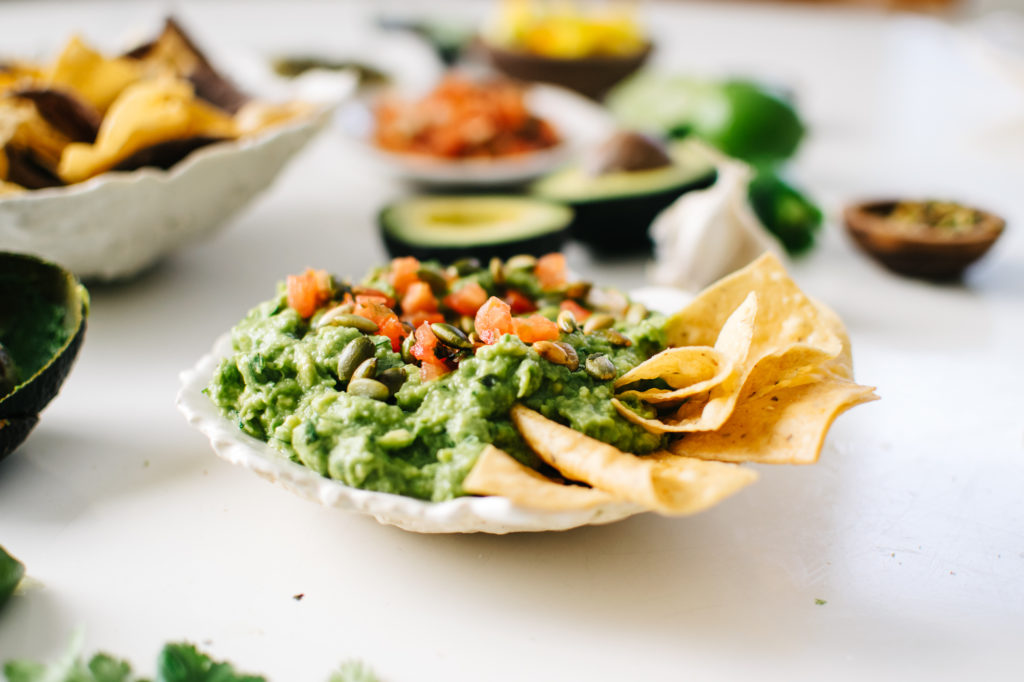
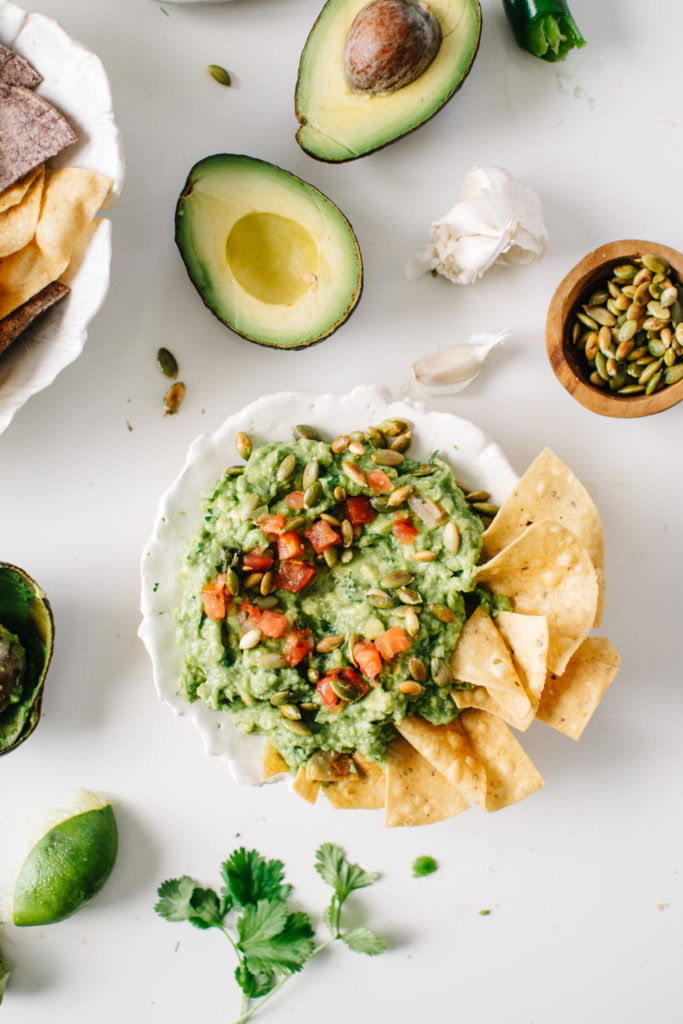
This version is nearly as simple, with a base of avo, garlic, jalapeño, salt, and cilantro. Topped with toasted pumpkin seeds (hat tip to Chef Fabian from Petty Cash here in LA for introducing me to this epic combo) and any other garnish you like, it’s the best and only way to start your Cinco de Mayo.
Ingredients
Method
- Using a microplane zester to grate the garlic and jalapeño (or mince very finelinto a large bowl. Add juice of one small-medium lime. Mash in the flesh of avocados, reserving the pits. Add salt, breaking up the flakes with your fingertips, and mash with a fork until you reach a nice partially creamy, partially chunky texture. Chop the cilantro and fold into the guacamole.
- In a cast iron or nonstick skillet over medium flame, toast the pepitas. Shake the pan back and forth occasionally to make sure they’re evenly toasted, and remove from heat when they begin to turn a nice golden brown. You may hear a few pops. Let cool a few minutes, then sprinkle them over the guacamole. Garnish with fresh tomato, cilantro, or salsas as desired.



